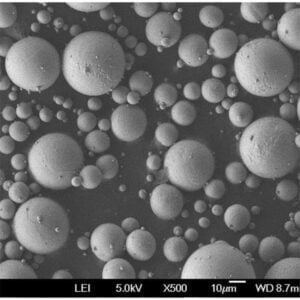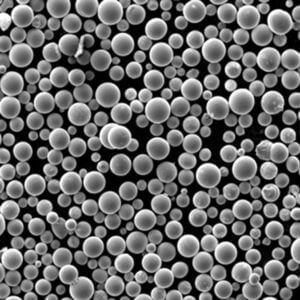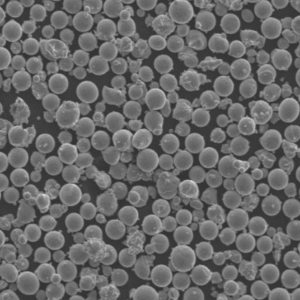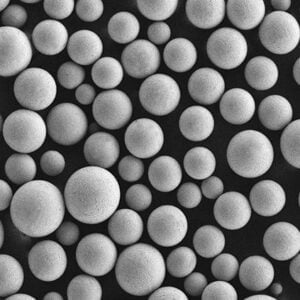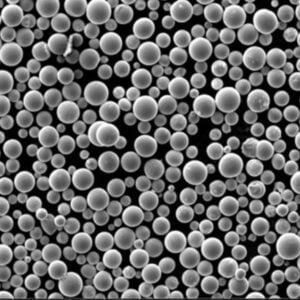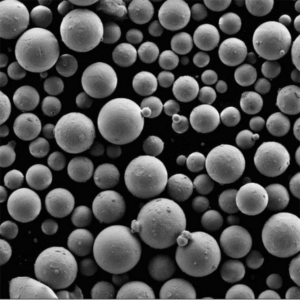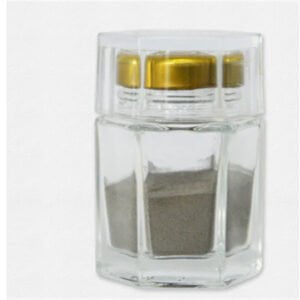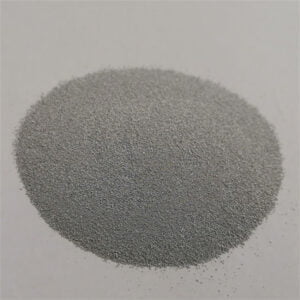Atomizace kovového prášku
Obsah
Atomizace kovového prášku is a critical technology for producing fine metallic powders with specialized characteristics. This guide covers the fundamentals, methods, applications and commercial landscape of metal powder atomization.
What is Metal Powder Atomization?
Metal powder atomization refers to industrial processes that turn molten metal alloys into fine liquid droplets, rapidly solidifying them into powder particles.
It involves:
- Melting metals into a liquid state
- Generating a molten metal stream
- Breaking up the metal into discrete droplets
- Solidifying the droplets into powder
- Collecting and sieving the powder
Atomization is used to produce metal powders with unique compositions, sizes, shapes and microstructures suitable for advanced applications.
Key Atomization Benefits
- Vlastní složení slitin
- Controlled particle sizes
- Spherical powder shapes
- Defect-free powder metallurgy
- Novel microstructures
- Custom powder properties
Common materials made through atomization include various alloy systems:
- Nerezové oceli
- Nástrojové oceli
- Kobaltové slitiny
- Slitiny niklu
- Slitiny titanu
- Tungsten alloys
- Drahé kovy
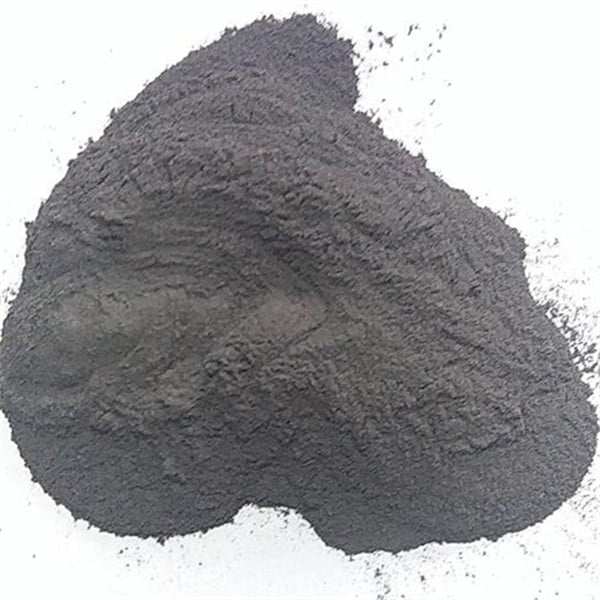
Metal Powder Atomization Methods
There are 5 main commercial atomization techniques:
Atomizace plynu
- Uses pressurized inert gas jets
- Common gases: Nitrogen, Argon, Helium
- Produces spherical, smooth powders
Atomizace vody
- Uses high pressure water jets
- Lower cooling rates than gas
- Irregular powder shapes
Odstředivá atomizace
- Molten metal poured on spinning disc
- Economical powder production
- Medium cooling rates
Ultrazvuková atomizace
- Uses ultrasonic vibrations
- Specialized lab-scale method
- Nanoparticle production
Indukční tavení elektrod
- Electrode vaporization in inert gas
- Limited niche applications
- Lower productivity
Atomization Method Comparison
| Metoda | Tvar částice | Rozsah velikostí | Produktivita | Náklady |
|---|---|---|---|---|
| Atomizace plynu | Sférické | 10-150 μm | Vysoký | Vysoký |
| Atomizace vody | Nepravidelné | 20-400 μm | Velmi vysoká | Nízký |
| Odstředivá atomizace | Semi-spherical | 20-250 μm | Střední | Střední |
| Ultrazvuková atomizace | Sférické | 1-100 nm | Velmi nízká | Vysoký |
| Indukční tavení elektrod | Smíšené | 10-100 μm | Nízký | Střední |
Atomizace kovového prášku Proces
Commercial metal powder atomization involves a series of tightly controlled steps under inert atmosphere:
1. Raw Material Selection
- Pure metals or master alloys
2. Melting
- Vacuum induction melting up to 2000°C
- Precise alloy chemistry inputs
3. Atomization
- Pouring molten metal into atomizing zone
- Breaking up metal stream into droplets
- Quenching and solidifying droplets
4. Powder Collection
- Settling chamber to collect powder
- Cyclone separators
5. Sieving
- Classifying powder into size fractions
- Further annealing if needed
6. Kontrola kvality
- Sampling and testing per standards
- Packaging and shipment
The production environment must have no oxygen or moisture contamination. Operational parameters like temperature profiles, gas pressures and flow dynamics are closely monitored.
Metal Powder Atomization Applications
Some major applications taking advantage of atomized metal powder include:
Aditivní výroba
- Selektivní laserové tavení
- Tryskání pojiva
- Tavení elektronovým paprskem
Vstřikování kovů
Tepelné nástřiky
Izostatické lisování za tepla
Brazing Materials
Katalyzátory
Prášková metalurgie
- Press and sinter tooling
- Vysoce výkonné díly
- Porous structures
- Soft magnetic composites
Atomized powder enables emerging technologies like additive manufacturing across industries:
| Průmysl | Aplikace | Výhody |
|---|---|---|
| Aerospace | Turbine blades, impellers, airframe components | Vysoký poměr pevnosti a hmotnosti |
| Automobilový průmysl | Gears, connecting rods, chassis parts | Increased efficiency |
| Lékařský | Joint replacements, implants, precision tools | Biokompatibilita |
| Elektronika | Shielding, contacts, sensors | Zvýšený výkon |
| Ropa a plyn | Důlní nářadí, ventily | Odolnost proti opotřebení a korozi |
Metal Powder Atomization Materials
Many alloy systems and material types are processed through atomization:
Nerezové oceli
- Austenitic grades like 304, 316, 317
- Ferritic and martensitic grades
- Custom compositions available
Nástrojové oceli
- H13, P20, D2, M2 grades
- Vysoká odolnost proti opotřebení
- High hardness after heat treatment
Kobaltové slitiny
- Biomedical CoCrMo alloys
- Wear resistant StelliteTM alloys
Slitiny niklu
- Corrosion resistant alloys like Inconel 625
- Heat resistant superalloys
Titanové slitiny
- Ti6Al4V grade 5 titanium
- Commercially pure titanium
Žáruvzdorné kovy
- Niobium, molybdenum, tungsten
- Very high melting points
Metal Powder Atomization: Specifications
Critical specifications for atomized metal powders include:
Distribuce velikosti částic
- Typically 10 to 150 microns
- Application method dictates ideal size
- Sieving classifies desired fractions
Tvar částice
- Spherical, smooth morphologies
- Impact compaction, flowability
Chemie
- Precisely blended compositions
- Custom alloys designed for properties
Hustota
- Up to 98% theoretical density
- Density optimization modeling
Plocha povrchu
- Relatively high surface area
- Impacts reactivity, solubility
Mikrostruktura
- Controlled grain sizes and phases
- Rapid solidification dynamics
| Parametr | Význam | Measurement Technique |
|---|---|---|
| Distribuce velikosti částic | Controls downstream processability | Laserový difrakční analyzátor velikosti částic |
| Tvar částice | Impacts density and flow behavior | Skenovací elektronová mikroskopie |
| Chemie | Achieves target material performance | Optical emission spectrometry, ICP mass spectroscopy |
| Hustota | Related to achievable properties | Gas pycnometry, apparent density tester |
| Plocha povrchu | Affects reactivity and solubility | Gas absorption surface area analyzer |
| Mikrostruktura | Určuje mechanické vlastnosti | X-ray diffraction, metallography |
Metal Powder Atomization Cost Analysis
Atomized metal powder is more expensive than conventional raw materials due to specialized processing:
- Malosériová výroba
- Complex quality control
- Manual handling steps
- Equipment maintenance
- Consumables and energy
- R&D expense recovery
Cost Drivers:
- Feedstock metal costs
- Quality conformance
- Velikost objednávky
- Velikost částic
- Exotické slitiny
Economics:
- Raw materials: 30% of total cost
- Processing: 70% of total cost
Cenové rozpětí:
| Materiál | Cena za kg |
|---|---|
| Nerezové oceli | $20-$250 |
| Nástrojové oceli | $25-$150 |
| Titanové slitiny | $70-$1000 |
| Kobaltové slitiny | $100-$500 |
| Slitiny niklu | $100-$2000 |
| Tungsten Alloys | $800-$5000 |
Business viability relies on maximizing production capacity utilization and end-to-end yield.
Atomizace kovového prášku: Pros vs Cons
Benefits of Metal Powder Atomization
- Excellent flow characteristics
- Úzká distribuce velikosti částic
- Customizable alloy compositions
- Spherical powder shape possible
- Controlled microstructures
- Enables emerging technologies
Challenges of Metal Powder Atomization
- High production cost
- Limited batch sizes
- Stringent safety precautions
- Complex quality conformance
- Qualified operator experience vital
- Costly trial-and-error development
- Handling fine reactive powders
Advancements continue expanding the horizons for specialty materials made via atomization.
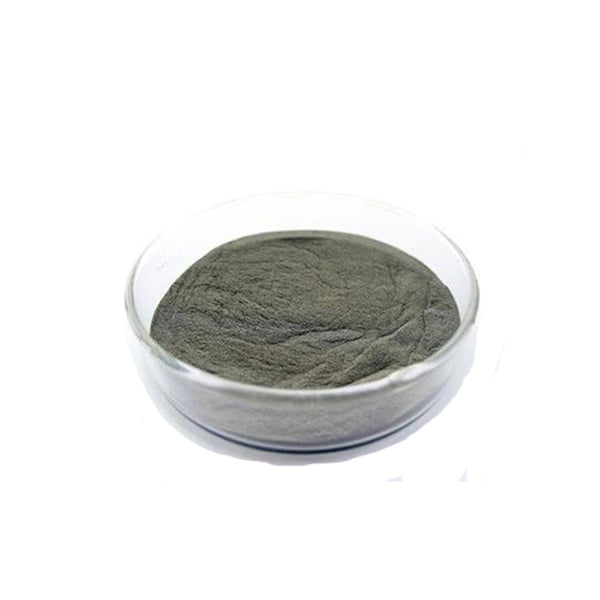
Nejčastější dotazy
Q: How are metal powders atomized?
A: Metal powders are atomized by breaking up a molten metal stream into fine droplets using gas jets, water jets or centrifugal forces, rapidly solidifying them into powder.
Q: What is water atomization?
A: In water atomization, a thin stream of molten metal alloy is struck by high-pressure water jets which break it up into small droplets. The droplets solidify into irregularly shaped powder particles as they fall through the water.
Q: What metals can be atomized into powders?
A: Many engineering metals like tool steels, stainless steels, nickel alloys, titanium alloys, tungsten alloys and precious metals can be atomized into fine spherical powders or irregular powders using appropriate techniques.
Q: What particle sizes can metal powder atomization achieve?
A: Conventional metal powder atomization can produce powders from around 10 microns to over 150 microns. Specialized nozzles and processing conditions allow particle sizes below 5 microns.
Q: How much does metal powder atomization cost?
A: Due to small volumes and specialized equipment, atomized metal powder costs between 5x to 10x more than standard raw metal stock per unit weight, with pricing ranging from $50 per kg to over $2000 per kg depending on composition and quality.
Q: Can you atomize multiple metals simultaneously into an alloy?
A: Yes, atomization allows melting and alloying various metals into customized compositions which solidify into an alloy powder with the desired elemental ratios and advanced metallurgical properties.
Q: What hazards are associated with metal powder atomization?
A: Fine metal powders may spontaneously combust, explode or be toxic if inhaled. Strict safety protocols for inert gas purging, explosion proof electrical equipment, pressurized nozzles, emergency ventilation and operator PPE are enforced.
Q: What machines are used in metal powder atomization?
A: The main metal powder atomization equipment includes vacuum induction furnaces, tundish pouring systems, gas and water jet nozzles, atomizing towers, cyclone separators, screening machines, powder drying ovens and sieving station.
Závěr
Metal powder atomization is an intricate, multi-faceted manufacturing technique essential for new material development crossing industry boundaries. Persistent metallurgical challenges continue driving process refinements through extensive tribology research and plant trials. With broader collaboration across the metal powder value chain harnessing latest automation technologies, atomization promises to elevate manufacturing—not eliminate it.
Sdílet na
MET3DP Technology Co., LTD je předním poskytovatelem řešení aditivní výroby se sídlem v Qingdao v Číně. Naše společnost se specializuje na zařízení pro 3D tisk a vysoce výkonné kovové prášky pro průmyslové aplikace.
Dotaz k získání nejlepší ceny a přizpůsobeného řešení pro vaše podnikání!
Související články

Vysoce výkonné segmenty lopatek trysek: Revoluce v účinnosti turbín díky 3D tisku z kovu
Přečtěte si více "O Met3DP
Nedávná aktualizace
Náš produkt
KONTAKTUJTE NÁS
Nějaké otázky? Pošlete nám zprávu hned teď! Po obdržení vaší zprávy obsloužíme vaši žádost s celým týmem.

Kovové prášky pro 3D tisk a aditivní výrobu
SPOLEČNOST
PRODUKT
kontaktní informace
- Město Qingdao, Shandong, Čína
- [email protected]
- [email protected]
- +86 19116340731






